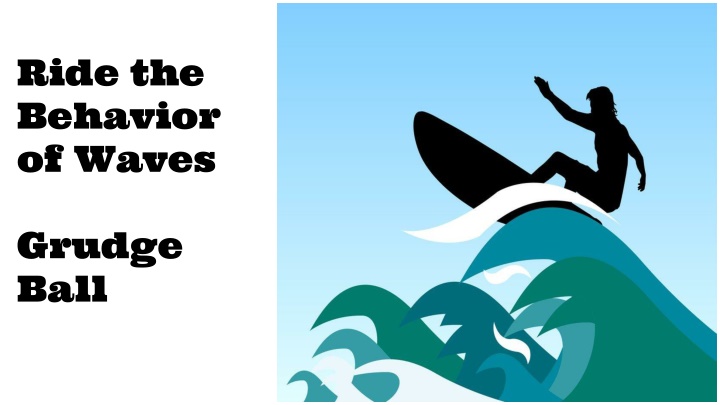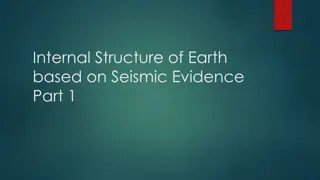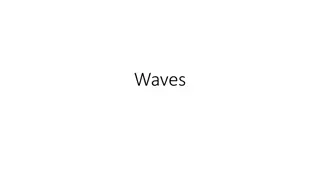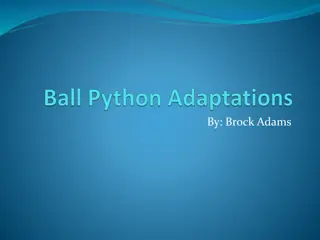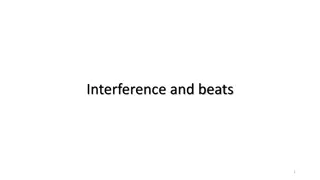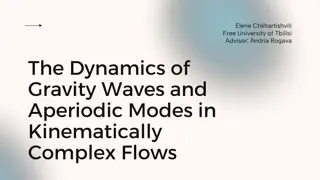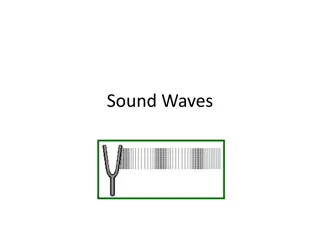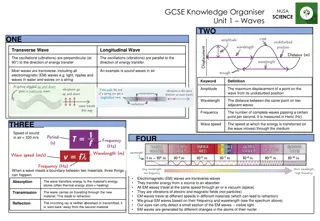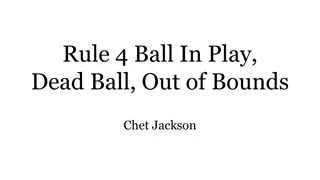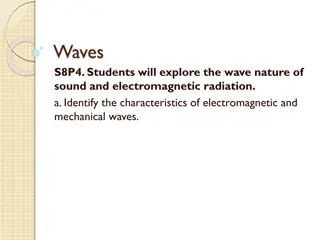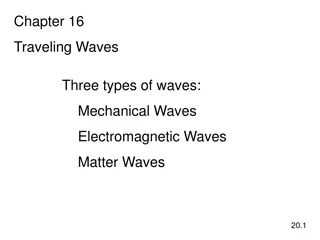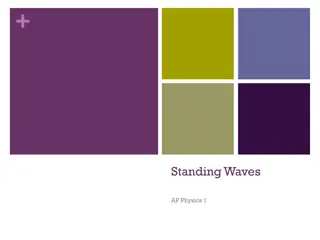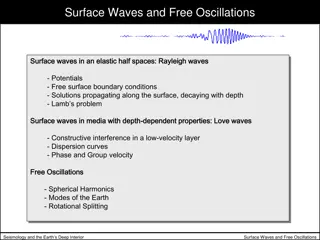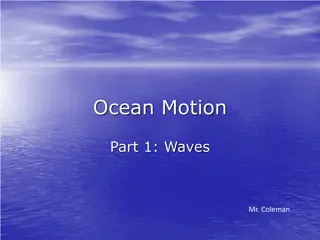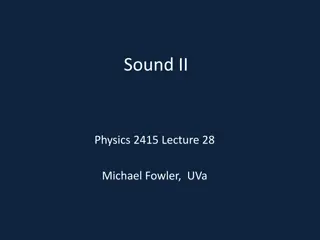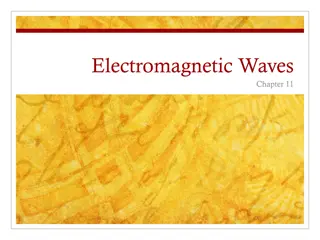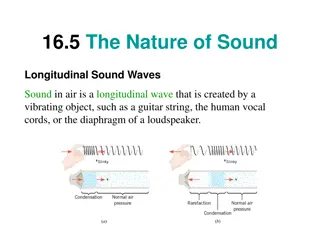Interactive Science Game: Ride the Behavior of Waves - Grudge Ball
Engage in an educational game where players answer questions related to wave behavior to erase X's from the board. By correctly answering questions and shooting Nerf ball hoops, teams can strategize and compete to advance in the game. Explore concepts like wave transfer, shadows, light sources, and color combinations in a fun and competitive setting.
Download Presentation

Please find below an Image/Link to download the presentation.
The content on the website is provided AS IS for your information and personal use only. It may not be sold, licensed, or shared on other websites without obtaining consent from the author.If you encounter any issues during the download, it is possible that the publisher has removed the file from their server.
You are allowed to download the files provided on this website for personal or commercial use, subject to the condition that they are used lawfully. All files are the property of their respective owners.
The content on the website is provided AS IS for your information and personal use only. It may not be sold, licensed, or shared on other websites without obtaining consent from the author.
E N D
Presentation Transcript
Ride the Behavior of Waves Grudge Ball
Grudge Ball Rules Each group gets a question. If they get it right they automatically get to erase two X's from the board. They can take it from one team or split it. They can not commit suicide (take X's from themselves). Before they take off these X's, though, they have a chance to increase their ability to get the other teams to hate them. They get to shoot the Nerf ball (nerf bball hoop). There are two lines with masking tape. One is a two point line while the other is a three pointer. When a team is knocked off they still take turns. To get back on the board they need to get the question right and make the basket.
1. Waves transfer a. matter b. energy c. speed d. water
1. Waves transfer a. matter b. energy c. speed d. water
2. The dark inner circle of a shadow A. is scary B. umber C. penumbra D. umbra
2. The dark inner circle of a shadow A. is scary B. umber C. penumbra D. umbra
3. True or False. Moving a light closer to an object will increase the size of the shadow.
3. True or False. Moving a light closer to an object will increase the size of the shadow. True
4. Which source of light produces the sharpest image, point source or diffuse source?
4.Which source of light produces the sharpest image, point source or diffuse source? Point Source
5. Two colors that combine to form white light are called A. Primary colors B. Complementary colors C. Secondary Colors D. Visible colors
5. Two colors that combine to form white light are called A. Primary colors B. Complementary colors C. Secondary Colors D. Visible colors
6. What determines the color of translucent objects? The color of the light it transmits.
7. What color will a green apple appear to be when viewed through a red lens? A. Red B. Green C. Black D. Greenish-Red
7. What color will a green apple appear to be when viewed through a red lens? A. Red B. Green C. Black D. Greenish-Red
8. A(n) _____________ image is right-side up. a. virtual b. real c. focused d. vertical
8. A(n) _____________ image is right-side up. a. virtual b. real c. focused d. vertical
9. A __________ lens is thinner in the center than at the edges. a. concave b. refraction c. convex d. diffuse
9. A __________ lens is thinner in the center than at the edges. a. concave b. refraction c. convex d. diffuse
10. When a light wave strikes an object, it can be a. Absorbed b. Reflected c. Refracted d. All of the above e. B and C only
10. When a light wave strikes an object, it can be a. Absorbed b. Reflected c. Refracted d. All of the above e. B and C only
11. Name 2+ ways Sound Waves and Light Waves are similar.
11. Name 2+ ways Sound Waves and Light Waves are similar. 1. They are both waves, duh. 2. Both transfer energy, not matter. 3. Both interact with matter.
12. Name 2+ ways Sound Waves and Light Waves are different.
12. Name 2+ ways Sound Waves and Light Waves are different. 1. Sound waves are mechanical, so they can transfer energy through matter. 2. Sound waves are longitudinal (but can be transverse through matter) 3. Light waves are transverse. Light waves interact differently with matter: reflection, absorption, transmission, refraction
13. If you cant see through an object, it is a. Transparent b. Opaque c. Translucent d. Demonstrating the Incidence of Refraction
13. If you cant see through an object, it is a. Transparent b. Opaque c. Translucent d. Demonstrating the Incidence of Refraction
14. If you can only sort of see through an object, its A. a ghost! Oh no! B. Transparent C. Translucent D. Opaque
14. If you can only sort of see through an object, its A. a ghost! Oh no! B. Transparent C. Translucent D. Opaque
15. Why does light travel in a straight line? A. Light waves will always travel in a straight line, even it they could come into contact with another object B. Light waves travel in a straight line because sound waves travel in a straight line. C. Light waves don t travel in a straight line. D. If there is nothing to interfere with light waves, they should travel in a straight line.
15. Why does light travel in a straight line? A. Light waves will always travel in a straight line, even it they could come into contact with another object B. Light waves travel in a straight line because sound waves travel in a straight line. C. Light waves don t travel in a straight line. D. If there is nothing to interfere with light waves, they should travel in a straight line.
